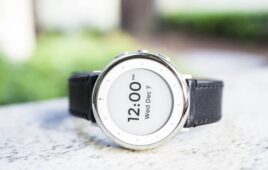By this time tomorrow, your heart will have beaten 100,000 times. In an average lifetime, that’s 2.5 billion full contractions. The heart is the first organ that forms in the embryo, and life ultimately ends with its last beat.
“It’s an amazing electromechanical pump that keeps on going in some people for 60, 70, or 80 years without needing a single repair. I can’t think of any human-made device, be it a valve, a pump, or anything, that can do that without breaking down,” said Ajit Yoganathan, a Regents Professor at the Georgia Institute of Technology and a cardiology researcher for more than 40 years.
“Obviously, though, in some cases, things do go wrong with the heart, but like any living system, it has self-repair mechanisms. It can rebuild itself after a heart attack,” Yoganathan said. “The heart can still function sometimes quite well even without open-heart surgery.”
Killer No. 1
Yet, heart disease remains the number one killer, taking 610,000 lives a year. That’s more than number two, cancer, and in the United States, more than the next five causes of death combined, according to figures from the Centers for Disease Control and Prevention.
Long-term, researchers at Georgia Tech and Emory University are exploring the root causes of major heart disorders like blocked arteries, or atherosclerosis, and valve impairment. But more immediately, translational researchers are engineering methods to detect and fix the damage that heart disease is doing.
“Some underlying heart diseases may never be eliminated, but we can delay them and extend life,” said Yoganathan, who has been a key facilitator at Georgia Tech in translating cardiological research into possible patient benefits, particularly in cooperation with Emory in their jointly run Wallace H. Coulter Department of Biomedical Engineering.
Six Medical Advancements
Engineers, scientists, and doctors are testing cardiological solutions with the potential of one day reaching patients.
All of the following cardiological solutions are currently unavailable for patient treatment.They are in preclinical and clinical trials or other human test phases. And if they succeed, it could be years before they are available to patients.
Even if these developments ultimately never make it to market, the underlying research is readily accessible and can inspire the improvement of existing or future therapies to save more patients’ lives.
1. Collagen patch with regenerative protein treats infarcted myocardium.
2. An RNA injection could replace electronic pacemakers.
3. Stem cell injections may strengthen babies’ hearts as they face multiple life-saving cardiac operations.
4. Effective atrial fibrillation medication delivered without its high toxicity.
5. Researchers are working toward a wearable seismocardiography that alerts patients and doctors when it’s time to adjust congestive heart failure medications.
6. Frontline detection of coronary artery disease at a fraction of the cost via seismocardiography and a CT scan.




